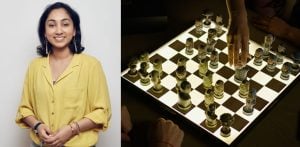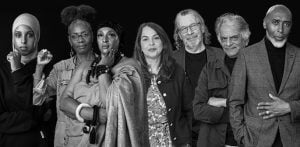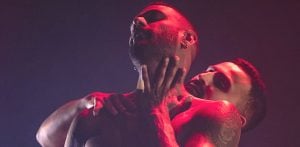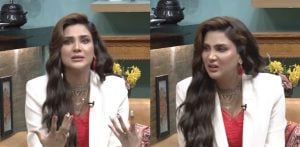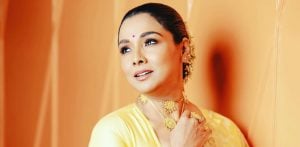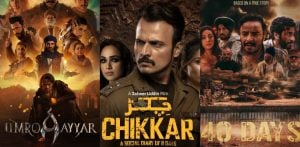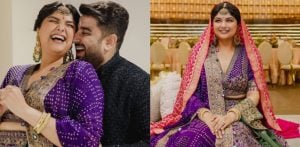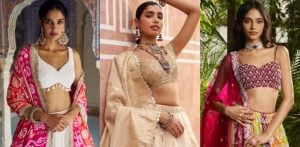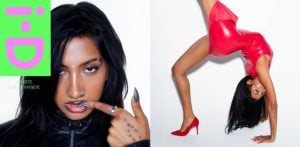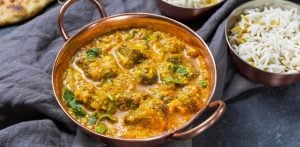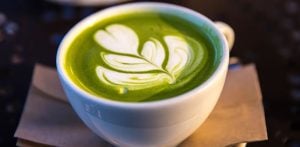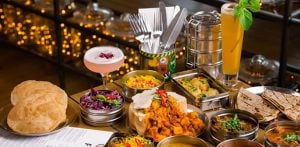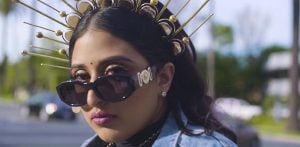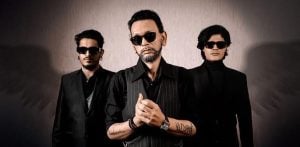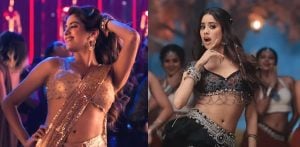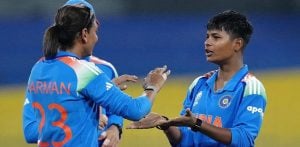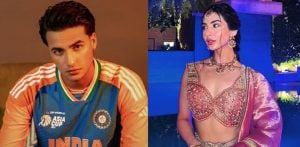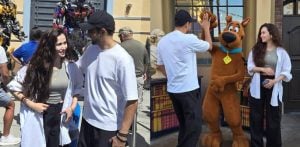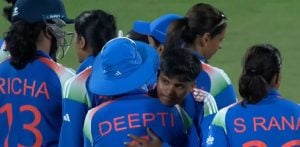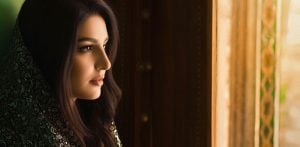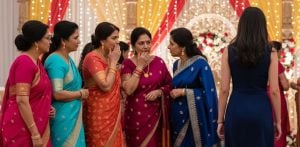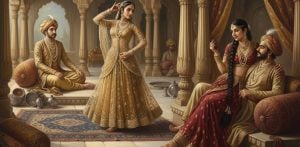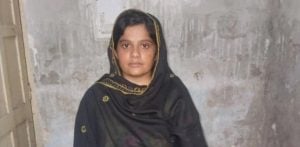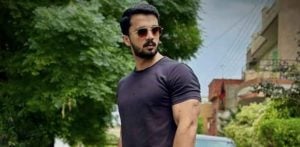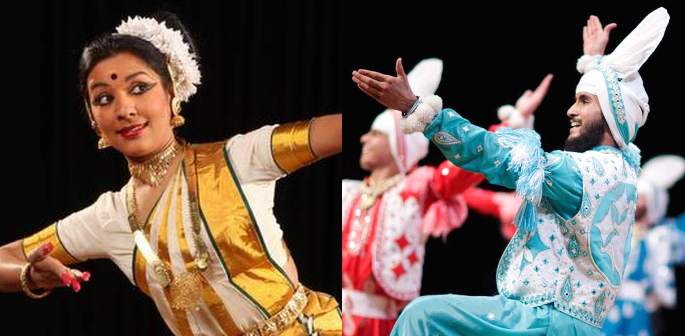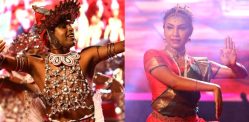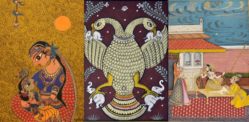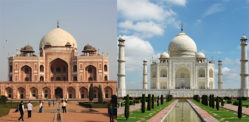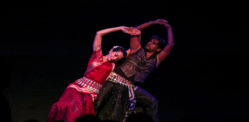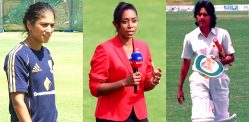"Mohiniyattam is the dance of the temptress"
Popular dance forms in India are widely spread throughout the country. Each dance holds great historical relevance and is traditional within the various states of India.
Many of these dance forms are practiced all around the world by many people of different ethnicities.
Some of the more feminine popular dance forms are performed in Bollywood movies by famous actresses such as Sri Devi (late).
The states of India hold high importance when discussing dance and their respective moves.
Moreover, state dances represent the pride and joy of a region while also uniting people together across this great country.
DESIblitz takes a look at the 10 most popular dance forms of India from the different states:
ASSAM
Bihu
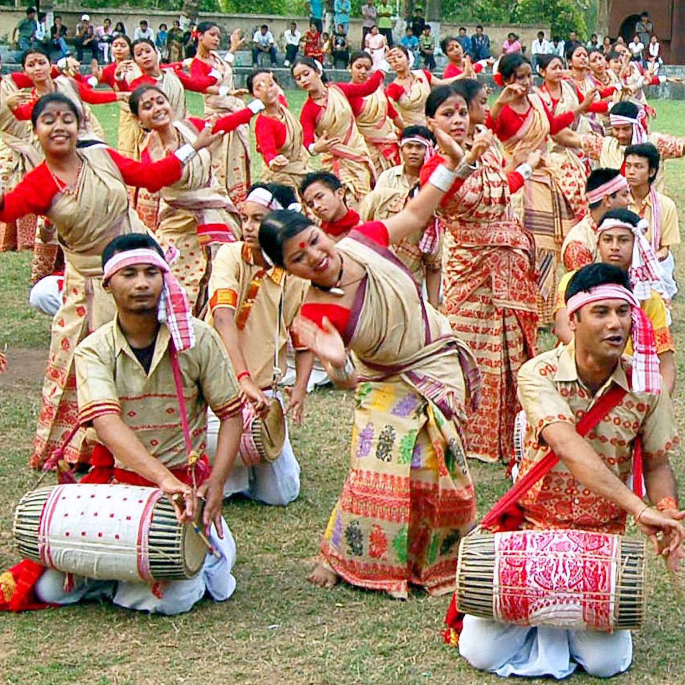
The people of Assam perform this folk dance during the Bihu festival at the beginning of Spring to mark the season.
Folk Artist Prashanna Gogoi talking to The Wire explains how Bihu can be seen as a form of art. He suggests:
“I say, let Bihu be a folk form but it should be somewhat systematic within its folk character so that anyone willing to learn it, be the dance or the instruments, can do so methodically, and that’s how its scope can be extended from a mere source of entertainment to a form of art that is presented on stage.”
The Bihu style is one of the most authentic dances in the world and is easily recognisable.
It is a popular dance form that consists of swift hand movements, steps and the constant shaking of the hips.
Young men and women take part in Bihu wearing traditional Assamese clothing. They also wear colourful, bold accessories that captivate the audience.
Male dancers wear a ‘dhoti’ (clothing around the waist) while female dancers wear a ‘chador’ (sheet) and mekhela (dress). The fast pace of this dance represents the youth of the men and women who take part.
Straying away from Assam, Bihu was also performed at the London Olympics in 2012. Music is one of the main necessities when performing Bihu.
The musicals and instruments consist of the ‘taal’ (rhythmic pattern), ‘dhol’ (drum), ‘teka’ (string based), ‘pepa’ (hornpipe), ‘gogona’ (jaw harp), ‘baanhi’ (flute) and the ‘xtuli’ (clay or bamboo-based).
Not one instrument can be left out when creating the music for the performance.
Watch a performance of Bihu here:

GUJARAT
Garba
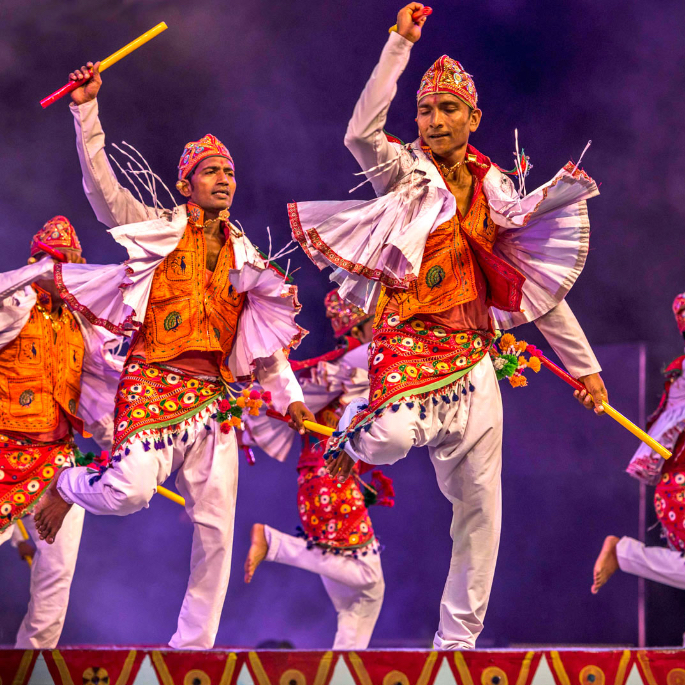
Garba is an extremely popular folk dance style from the state of Gujarat. The Garba dance traditionally marks a girl’s first menstrual cycle and celebrates fertility and womanhood.
Sticks, also known as ‘dandiya’ are a major element of this dance, along with rapid arm movements.
The Garba dancers move their arms in different directions, swinging from one side to another. Their movement is smooth, consistent and energetic.
People dance to Garba at festivals at a very fast pace in a circle, which represents the cycle of life.
There are a few popular moves when performing the Garba. This includes the clapping of hands, snapping of fingers, turning and bending.
They dance counterclockwise and tend to move in opposite directions if there are too many participants in the circle.
This style of dance starts slow and then gradually builds up its speed, forming a well put together performance.
Watch a performance of Garba here:

KERALA
Mohiniyattam

Mohiniyattam is a famous dance form that connects to the state of Kerala. The Mohiniyattam is known as a ‘spell bounding dance,’ which mesmerizes the audience.
This riveting performance is identifiable through its feminine, airy, gentle form of dancing.
Mohiniyattam is a unique form of classical dance in comparison to others. Salini Venugopal, who is a writer for the magazine Welcome Kerala talks about its authenticity:
“Mohiniyattam could establish an identity of its own and the status of a classical dance among the other Indian classical traditions.”
Compared to other popular dances, the Mohiniyattam is performed by a solo female dancer.
Consequently, there are two types of performances when doing Mohiniyattam. One is named ‘Nritta’ (graceful movement), with the being ‘Nritya.’
Nritta is a performance purely based on rapid dance movements, exquisite form and consistency. Like the Bardo Chham, Nritya is based upon enacting a play through dancing and singing.
Nritya also involves slow body movements and gestures to express feelings and emotions, which are felt by the audience.
The performer sings in Manipravala, which is a mixture of languages such as Sanskrit and Malayalam.
Salini Venugopal describes how Mohiniyattam and how it is presented:
“Mohiniyattam is the dance of the temptress which presents with striking bodily poses and attitudes and exquisitely graceful footwork.”
Mohiniyattem connects to the old traditional dance styles as mentioned throughout poems and texts. Salini states:
“The hand gestures are mainly adopted from Hasta Lakshana Deepika, a text followed by Kathakali.”
Hence, with historical linkages, Mohiniyattem became a prestigious dance form of Kerala.
Watch a performance of Mohiniyattam here:

MADHYA PRADESH
Matki

The Malwa region of Madhya Pradesh is where dancers mainly perform the folk dance, Matki. Women of Madhya Pradesh often perform Matki dance on occasions such as weddings and birthdays.
Matki is a solo dance that gradually becomes a group performance near the end involving women from the crowd.
Earthen pots also known as a ‘matki’ are sometimes the main element when dancing. They represent the daily lives of the women in their state.
The lives of women living in Madhya Pradesh consist of carrying water in earthen pots to and from their homes.
They place the earthen pot on their head while dancing adroitly to the dhol. The dancers use very small and slow steps to ensure the pot does not fall.
Using small steps, dancers twist and turn rhythmically, while moving their hands frequently.
Dancers also place one hand on their hip, while turning around slowly, using their other hand to create smooth gestures.
They pass down the dance from generations, meaning there are no training centres or schools for younger women to learn.
Vibrant sarees or a colourful lehenga are what the dancers wear. They also wear a veil covering their faces to reflect traditions within their state.
Watch a performance of the Matki here:

ODISHA
Odissi
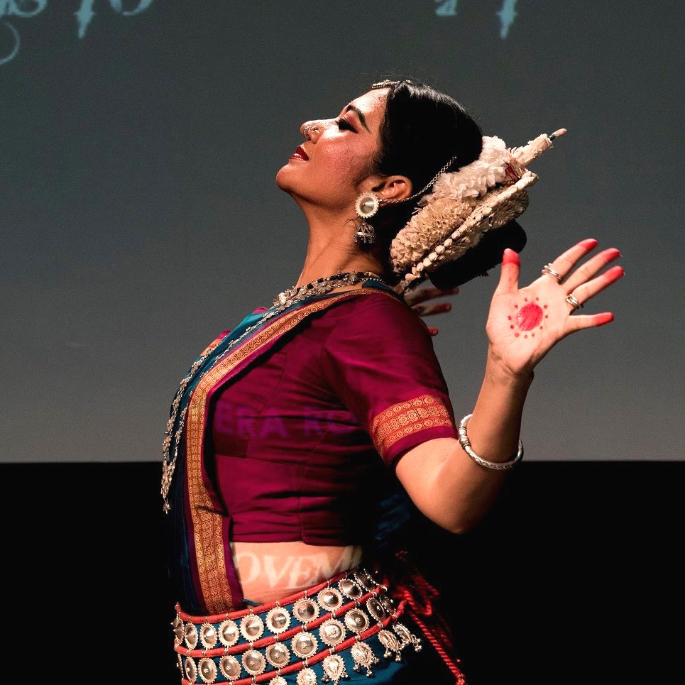
Also spelt as ‘Orissi’, Odissi is a classical dance form of India.
Odissi became a popular dance form during the reign of the emperor Kharavela. Odissi was his favourite type of dance, which led him to popularise it within the entire state of Odisha.
The shift between being known as temple dancers to entertaining royal courts was rapid.
Like most other dance performance, Odissi performers wear boldly coloured sarees. These colours mainly consist of purple, green, red and orange.
Eye contact and facial expressions are some of the main important elements when performing Odissi. The dance moves portray vibrancy, lustiness as well as the tradition and spirituality of India and the states within it.
In an interview with Mariellen Ward from Breathedreamgo, Odissi dancer Meera Das explains:
“What I feel now is that Odissi is the best: the attire, softness, grace and litling movements of the dance.
“To me, Odissi is the most graceful. Odissi uses foot, litling torso [and] the postures.”
There are three main dance elements when performing Odissi. They are the movement of the pelvis, head and chest areas. With foot movement being consistent, the dancers constantly tap their feet prominently but smoothly.
Odissi dance is slow throughout the performance. It involves the dancer following the movement of her hands; wherever her hands go, she goes.
Interesting enough, several actresses have performed Odissi in movies. Vidya Balan performed it in the movie Bhool Bhulaiya (2007).
Sri Devi, Rekha and Rani Mukherjee have also performed Odissi in their movies.
Watch the performance of Odissi here:

PUNJAB
Bhangra
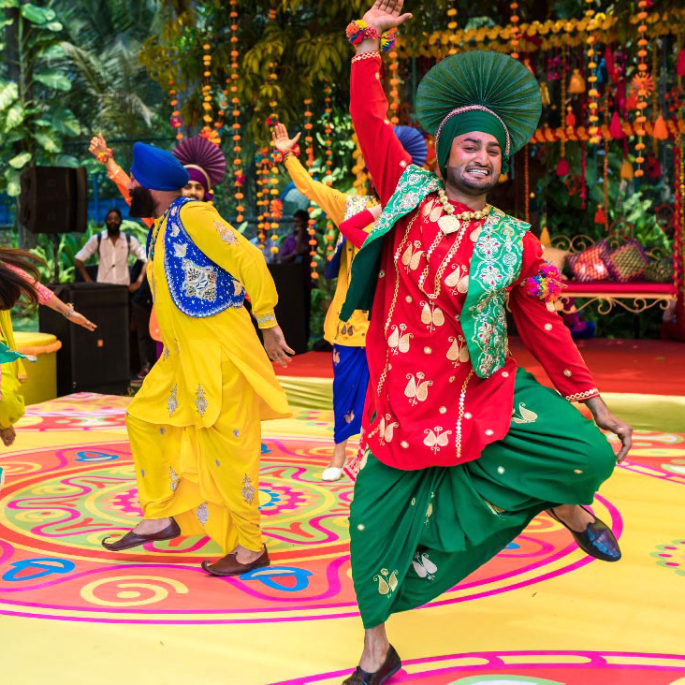
Many people living outside of India recognise Bhangra and often use this Punjabi dance form when dancing at weddings or parties.
Both men and women take part, dancing in a freestyle form. However, when professionally performing, the performers dance together following a rhythm and a synchronised flow.
It originally associates with the spring harvest festival from Punjab, India. This is where the name Bhangra originates from.
Every Bhangra performance associates itself with forceful leaps, high kicks and bends of the body.
These moves share specific names such as, the ‘chaal’, which is is a step that involves performers to dance low. It also involves performers to spread out their lower body with a straight back, lifting their left foot up and down.
Another step is the ‘faslaan’ where the movement of both legs is important. Dancers place their hands on their hips and jump from side to side.
The ‘double dhamaal’ is made up of kicking your legs up at about knee length while pointing up your index finger.
‘Single jhummar’ and ‘single chaffa’ are also basic steps when performing Bhangra.
This popular dance form is always either accompanied by a dhol, upbeat bhangra songs or even both in some cases.
Many Punjabi films such as Kurmaiyan (2018) and Shadaa (2019) have included Bhangra in their dance scenes.
Watch a performance of Bhangra here:

RAJASTHAN
Ghoomar

Ghoomar became famous from the movie Padmavaat (2018)when it was performed by Deepika Padukone.
This is a folk dance, which stems from Rajasthan and has many traditional values. One of the traditions being that new brides are expected to dance when first entering her husband’s home.
Women from any age range can perform Ghoomar. It is generally an easy performance with just a few complex movements.
The hardest part of Ghoomar is its very specific footwork and bold hip movement. Once a dancer can master these moves, it is very simple.
Due to its challenging footwork, it can take quite some time to practice. Deepika Padukone took over a month and a half to practice this dance form.
Women dance to Ghoomar at gatherings and parties. The women move around in a circle, with their skirts flowing gracefully.
When performing Ghoomar, the dancers move with clockwise and anti-clockwise steps. They sometimes clap their hands in between the performance too.
Moreover, pirouettes are an immense part of Ghoomar as they reveal the bold colours from the dancers’ ‘ghagra’ (dress).
The speed of Ghoomar depends on the beat of the song. When the beat increases, the dancers twirl slightly faster.
Watch a performance of Ghoomar here:

TAMIL NADU
Bharatanatyam
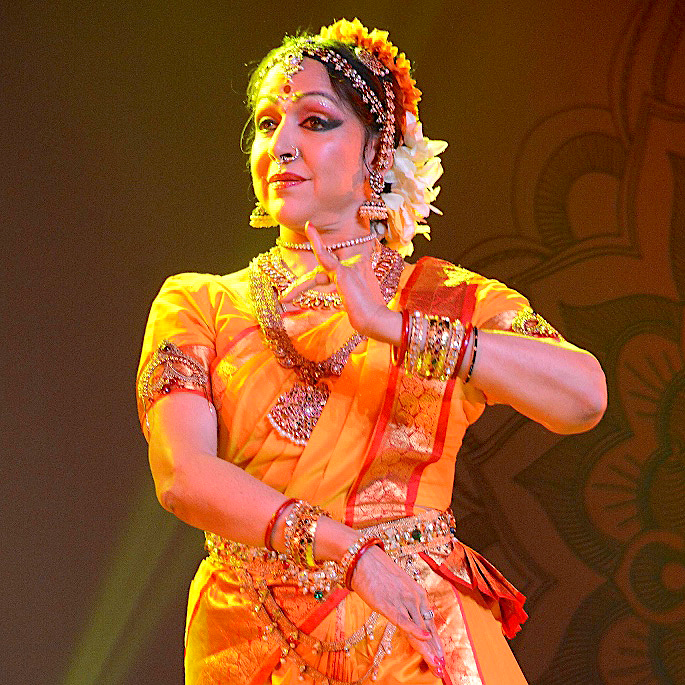
Bharatnatyam from Tamil Nadu is considered as the mother of all dances.
Bharatanatyam was very widespread prior to the British rule but took a backseat during the colonial times. However, this special dance form has been kept alive by traditional teachers, passing down the respectable art to future generations.
Bharatanatyam combines dance with three key components, including music, beats and expression. Classical Carnatic music accompanies Bharatanatyam.
This dance is famous for the delightful leg movements and hand gestures, which traditionally are referred to as the Mudras.
Bharatanatyam dancers wear similar colourful costumes to sarees, which are made with Kanchipuram silk and Banaras silk.
In Tamil Nadu, it is an honour for women to train in this classical dance form.
The dream girl of Bollywood, Hema Malini has learnt the Bharatanatyam dance. There are many Bharatanatyam dance songs that have featured in Bollywood.
Watch a performance of Bharatanatyam here:

TRIPURA
Hojagiri
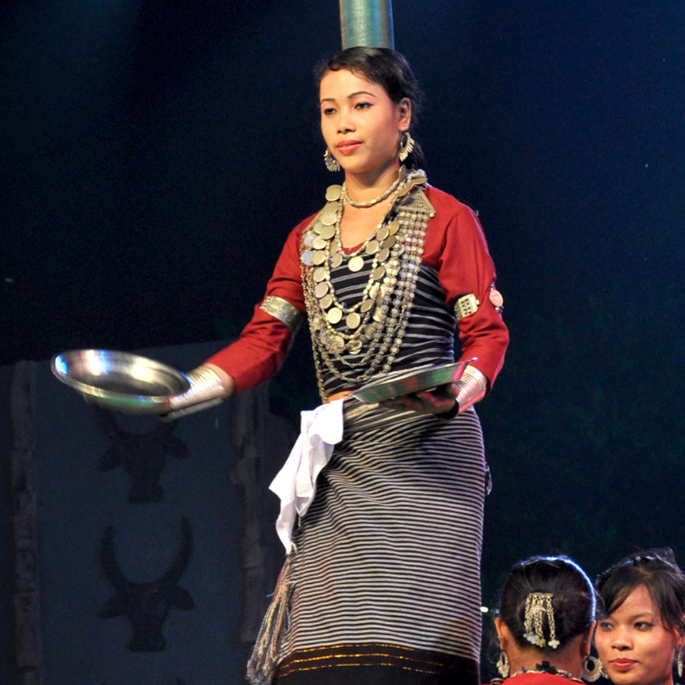
Hojagiri is another attractive folk dance in India. Dancers perform this in groups of 4-6 during festivals.
Women and young girls normally take part in Hojagiri. However, men also participate in the performance by singing songs and playing instruments.
Dancers involve props in the performance of Hojagiri. The props used are objects such as bailing, a household traditional lamp and a plain dish.
Some performers tend to hold a handkerchief and balance a glass bottle on their heads too.
People who are willing to perform this dance must learn professionally. Because it is a long-winded process, it is extremely difficult.
Slow hip waist manoeuvering and bowing are the main elements of this dance.
Women hold a dish in each hand and move them from side to side in slow, circular motions. At one point in the performance, one performer stands on top of another as they continue to dance.
When entering and leaving the stage, the performers slowly shift together in a line. They do this by rocking their hips side to side and slowly tapping their feet.
Watch a performance of Hojagiri here:

UTTAR PRADESH
Kathak
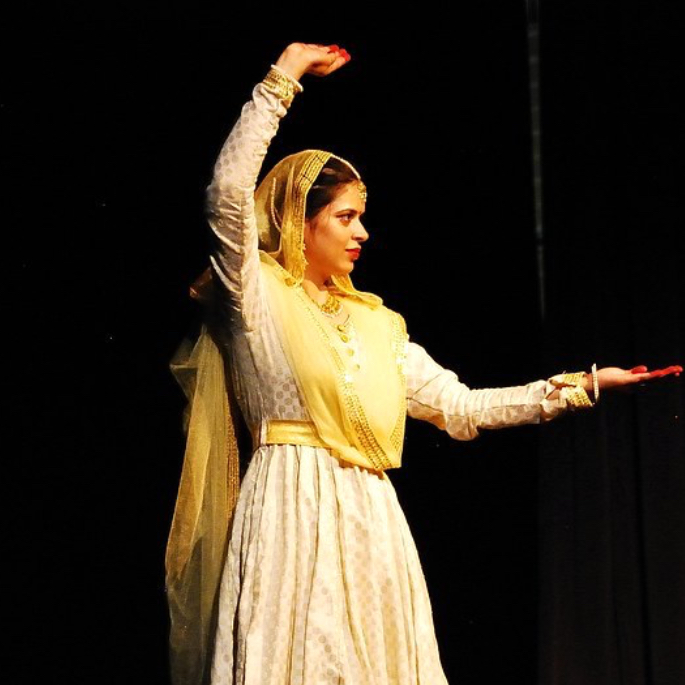
Kathak originates from the word ‘Katha,’ which means story in the Hindi language. There are two types of Kathak, one is ‘Nritta’ and the other is ‘Nritya’.
Primarily, Kathak was created to entertain the royals. They wanted to see something different, rather than conventional dances.
Dancers perform Kathak through story-telling when it comes under the style of Nritya. The performance of Nritya in Kathak is shown through vocals and musical elements.
Men and women typically perform Kathak together. They tell a story through their body movements.
The Nritta style of Kathak is based upon elegant and slow eyebrow, neck and wrist movements. The dancers increase their speed in multiples to complete a sequence of bol (classical music).
Each sequence consists of amazing footwork, gestures and turns. The dancers synchronise their footwork smoothly and perfectly.
To present the end of a sequence, the dancers sharply turn their heads.
Avantika Bahuguna Kukreti is a Kathak dancer. Speaking to Broadway World India about the footwork of Kathak, Kukreti says:
“The special feature of Kathak is its beautiful footwork, which is also known as taktar.”
“There are various sequences of taktar that are primarily weaved around the bol ta, thai, tat, and vary as per the composition.”
Interestingly, ankle movements are a key element when performing Kathak, they have to match the beat and sound of the music.
Ankle bells are an important aspect when performing Kathak as is traditional gold jewellery.
Furthermore, Kathak dancers wear bold, beautiful clothing. Women dancers wear a saree with a blouse or a skirt with stunning embroidery.
Men wear silk dhoti’s when performing. They tie a silk scarf around their upper body too.
Watch a performance of Kathak here:

Besides being the most popular dance forms of India, the above 10 are very trendy in Bollywood.
There are many other dance forms of India too, including Kuchipudi (Andhra Pradesh), Lavani (Maharashtra) and Manipuri (Manipur).
All in all, popular dance forms of India are recognisable around the world and are adored, with many people joyfully practicing them.


